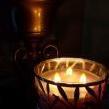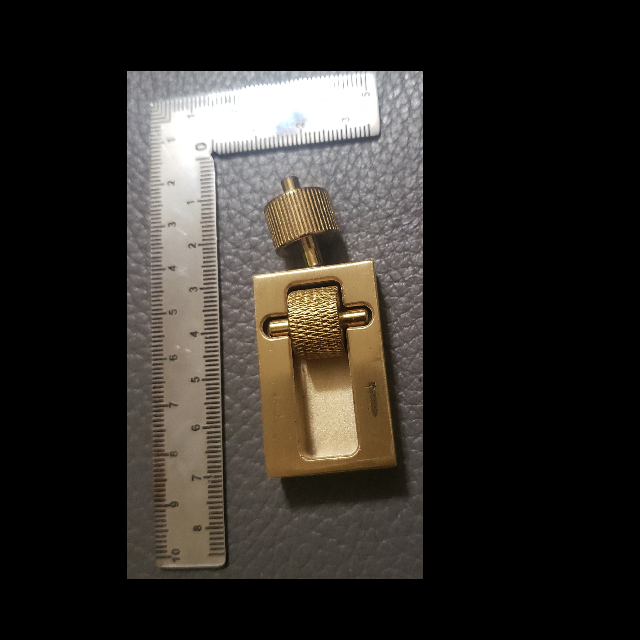-
Posts
1,283 -
Joined
Content Type
Profiles
Forums
Events
Blogs
Gallery
Everything posted by SUP
-
I can imagine. All that hard work and the beautiful results. It is heirloom quality.
-
That's very beautiful!
-
I found this small edge paint roller some time back. it works well for smaller items. It is available on Amazon and Temu, Temu being half the price but longer wait time for delivery. Artisan Leather Supply has something similar but with an attachment to control the thickness of the paint film. Buckle Buy has a larger roller for larger projects but that is, of course, more expensive.
-
I just use a permanent waterproof Gorilla glue and it works fine. I have barge but never used it. Too much of a hassle with worrying about the lid getting stuck and so on.
- 18 replies
-
I saw an East Asian video for this some time ago but I cannot find it. The woman used dilute Tokonole on small sections (so that very little is absorbed) and quickly slicked it down, moving her glass slicker in long strokes in one direction, towards the edges. This pasted down the fibres while removing most of the Tokonole, leaving only a very thin layer behind. This smoothened the flesh side without making it stiff or damaging the tooling on the grain side. I tried it and it works well. Much pressure is not needed, so the tooling on the grain side is not damaged in any way. I used a glass coaster for this as I did not have a burnisher and it worked. If you use something too heavy or put too much pressure, the tooling might get affected. This technique does not require much pressure.
-
You've caught the eyes really well! That sweet innocence that all dogs have.
-
And now, why not get back to the subject of this forum in general and this thread specifically? If anyone wants to discus religion or does not like what is done here or the people here, there are surely other forums for such people. Just not this one. As my wise old great-grandmother used to say, " If you can't say anything nice, don't say anything at all.'
-
Let's get back to leatherwork here and away from other non-related matters. @toxo are you planning to stitch around the edges like the one on the right? It would be a pity if they opened up, after all your hard work and care for detail.
-
Well said. Trying to be as truly good a person as possible is all that matters.
-
Hee hee, I rarely use gloves. Too uncomfortable. So I go around with stained hands, although most dyes come off if scrubbed with those yellow scrubbies. Last week it was vinegaroon, no idea why it dyed around my nails. That stayed for a while.
-
@toxo That is a lot of work! You have got all the lines so regular and straight and even. It certainly looks worth it! The final 'fabric' is bright, beautiful and cheerful as are the keychains. Good work, my friend.
-
@Aventurine I think it would be helpful to get an idea of how long the mix works for. Even if you cannot find the recipe, I'm sure there will be people here who will want to work with those ingredients and come up with something so effective. SO in place of cherry gum. something like gum arabic should work, isn't it?
-
@Aventurine Could you post the pics here of the items that you do have? If you can find that recipe, it would be great see it here. A mix that is so effective, is, I think, a leatherworker's dream. Also, what is cherry gum, if I might ask? When I search for it, all I get is chewing gum in cherry flavor or something about wood.
-

Has anyone used transparent/translucent leather?
SUP replied to SUP's topic in Leatherwork Conversation
Yes it is, isn't it? -
@AventurineThis thread is active and will remain active as long as I and, I believe, @fredk, keep a check on the pieces of leather we conditioned with the oils with which we are experimenting and report on it a couple of times a year. Such experiments take time. Your observations on cedar oil and myrrh are very interesting indeed. Do you still have the items on which you used them? How have they aged with those treatments? It would be interesting to know. I especially like the idea of your wind barrier skin balm. What proportions of the ingredients did you use, if I might ask? Good to hear the information about leather care in the past. Yes, different oils and lubricants would have been used, over different times and all over the world. Naturally, it would usually have been whatever was available at hand. I need to determine the leather conditioners used in the East a well. However, this thread was not started with thinking about what was used where and when to care for leather. If you read it from the beginning, my question was about mineral oil and I am satisfied that it does not damage leather in any way and we have come to the conclusion that most oils work fine. Rancidity and odor are not issues either. Now it is just a matter of seeing how the leather weathers over time, with those different treatments. If you would like to join the simple experiment, you are welcome. Even contributing what you have in the comment above, provides further information about oils on leather. Thank you for that.
-
@Zanshin That is a beautiful desk. Would you share how you made the leather top?
- 15 replies
-
- desktop
- veg tanned leather
-
(and 1 more)
Tagged with:
-

What is Mycelium Leather? Does it exist?
SUP replied to RobertoDR69's topic in Leatherwork Conversation
@alfordjennifer producing raw mycelium leather might be environmentally friendly but if the process of making it ready for the market requires treatments that utilize synthetics like PU, it is hardly remains environmentally friendly, isn't it?. Besides, sustainable choices, are sustainable only when there actually are useful alternatives uses for what they are replacing, is it not? What would be the alternative use of the animal skins produced by the beef industry? Instead of people the world over trying to come up with replacements for leather, if they worked to come up with ways of being more humane when slaughtering animals for food, it would be so much better. Ways to decrease their fear, for example. It is so sad, you can actually smell the fear. I have passed areas where there are abattoirs close by and passed trucks carrying animals for slaughter and you can smell that fear. I can't help feeling that mycelium leather fits into the same category as google glasses, self driving cars and other 'nice to have' items that are actually not practical at all. A waste of money that could have been used for things that are actually useful! Sorry! that is the pre-coffee me, so grumpy. @alfordjennifer no offense intended. -

Has anyone used transparent/translucent leather?
SUP replied to SUP's topic in Leatherwork Conversation
Yes, it does. I've not tried pounding it but I've creased it, dyed it, and folded it and it remains transparent. -

Darkening Leather Boots/Shoes
SUP replied to cottontop's topic in Shoes, Boots, Sandals and Moccassins
That looks very nice. And Startso dyes do last. We have been using our dyed shoes non-stop for several years now and they look as fresh and new as ever. I knew nothing about leatherwork then, else I might not have used them, and lost out on a good thing. Sometimes shortcuts work very well. -
@Mablung I tried scotch tape but it keeps coming loose. Must try it again. @DJole My aim is not to protect the pattern. It is to protect the outside leather, what will become the scraps. Sticking the pattern all around prevents it from moving as I punch or cut and the paper gets loose. I usually don't use a pattern more than once. If I can add something between the paper and the punch, the paper will not tear and I can stick it down in only a few places. So something like what you describe. Thank you for the idea.



